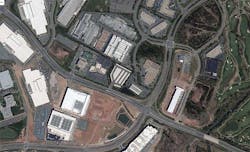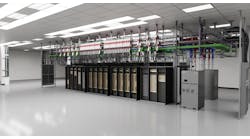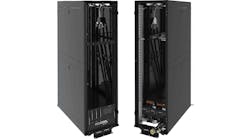The data center industry is busier than ever, with the COVID-19 pandemic driving more leasing and more construction. There are also more new players entering the industry, and in the most competitive markets, this has meant lower pricing on large deals.
For the data center market as a whole, pricing on data center capacity has held steady, especially for smaller requirements and enterprise deals. But there is strong competition for deals with hyperscale customers, who lease large chunks of data center space and are not bashful about seeking bulk discounts.
Although pricing is lower in some markets, costs are lower as well. Leading data center developers can now borrow money at lower rates than ever, due to investment-grade credit ratings, heightened interest from lenders, and secured borrowing strategies. As a result, they say the have been able to maintain returns on their data center projects.
Analysts say the trends toward lower costs and lower pricing are typical of a maturing industry backed by sophisticated capital.
“We’re in a very young industry, and we’ve seen it become highly competitive over the last five to 10 years,” said David Liggitt, CEO of datacenterHawk, which tracks industry leasing trends, in the DCD Virginia conference last week. “That’s changed some of the returns on capital today, and we’ve seen pricing compression in markets like Northern Virginia, Chicago and Dallas. That has to do with the competition, but it also has to do with a different product that’s being built today. This industry has become incredibly efficient in the type of facilities that are being built.”
The cost to build new data center capacity, which was once estimated at $10 million to $15 million per megawatt, has pushed relentlessly lower, with many developers now delivering new capacity at $6 million to $9 million per megawatt.
Large developers note that prices have always varied across geographic markets, and that pricing pressure is often temporary due to an influx of data center inventory in specific markets, like Ashburn in Northern Virginia.
“I don’t think there is any real dynamic shift in the competitive landscape,” said Andy Power, the Chief Financial Officer of Digital Realty, in the company’s recent earnings call. “Our returns on development, which are obviously tied very much to our success within the hyperscale arena, actually went up across a couple of markets. Our success over the last few quarters in the Ashburn market – a hotly-contested market where we have been able to be 100% pre-leased and rather full – speaks to our success within that category. ”
Pricing Slightly Lower, But Returns Stable
Pricing for data center capacity has been trending lower for years as the market has grown. Real estate firms that track the data center market say pricing has trended between 5 and 10 percent lower, with large deals in Northern Virginia being the most competitive.
CBRE says asking rates for wholesale colocation (N+1, Tier III capacity) fell 5.8 percent in the first half of 2020. In primary markets, average rates declined from $129 per kilowatt per month (kW/M) for 250-500 kilowatt deals to about $122 kW/M at mid-year. The decline was smaller in secondary markets, from $140 to $135.
The most aggressive pricing has been on large deals of 5 megawatts and larger, with rates of $80 to $100 kW/M for hyperscale deals in Northern Virginia, Dallas and Chicago, and sometimes even lower in Northern Virginia.
But the market dynamic in Northern Virginia may be improving after a huge burst of COVID-driven leasing in the second quarter of 2020 filled much of the available inventory.
“In most of our markets, supply and demand is pretty much in balance and pricing is solid,” said Paul Szurek, the President and CEO of CoreSite, in the company’s latest earnings call. “Quarter-over-quarter (prices) seem pretty stable. Virginia still is the most challenging market from the standpoint of pricing, but it hasn’t gotten any worse in the last couple of quarters and may have even improved a little bit.
“We continue to believe we can achieve our historical yield targets,” Szurek added. “Those haven’t changed.”
Better Borrowing Reflects Industry Fundamentals
The world’s largest hyperscale Internet companies often lease cloud capacity from data center developers, rather than building their own server farms. Leading wholesale data center providers have optimized their designs and supply chains to deliver lots of space, as quickly as possible. They use more pre-fabricated components, including entire power rooms that can be built-offsite, delivered on a skid and plugged into the side of a building. Large developers also pre-order large equipment like generators and UPS units.
This process has helped reduce costs, especially for the largest projects. That said, navigating COVID-19 construction site safety practices has been a challenge. A survey of data center construction professionals from Turner & Townsend found that 57 percent believe market conditions in 2020 have driven up data center construction prices, at least temporarily.
But on the financing front, the news has been the industry’s improved access to capital.
“One of the things you will see major data center providers talk about is how efficient they have become at working to obtain as cheap capital as they can,” said Liggitt. “Those savings have been passed on to the users. It’s really a combination of a very competitive market, and a more efficient product that is helping support the world’s largest data centers.”
That has attracted new types of investors in the data center industry, who are eager to capitalize on the sector’s success. This includes infrastructure funds and sovereign wealth funds with deep pockets and extended time horizons, as well as marquee Wall Street players like KKR, Bain Capital, Blackstone and Goldman Sachs, which have all invested heavily in the data center businesses in 2020.
At the same time, several of the leading publicly-held data center REITs (real estate investment trusts) including Digital Realty, Equinix and CyrusOne have gained investment grade ratings, allowing them to borrow money at more attractive rates. In a capital-intensive business like the data center sector, lower borrowing costs make it cheaper to build data centers.
Meanwhile, providers including Vantage Data Centers and STACK Infrastructure have accessed cheap capital through securitization financing, in which a company creates a security based on the creditworthiness of a specific pool of assets, rather than the entire company.
Pricing and the Competitive Landscape
Although developers say they are comfortable with current returns, securities analysts are watching whether some providers may get more aggressive on pricing, prompted by comments during the recent earnings call for CyrusOne, which has been a leading player in the wholesale data center market.
“We have lost share over the last couple of years, and we need to improve in this area,” said Bruce Duncan, the President and CEO of CyrusOne. “It’s well known that hyperscale development yields have compressed. I would say we missed some deals this year and last year, because we thought that the pricing was too aggressive and we didn’t want to play at those rates.
“We think that by being a little bit more aggressive that will help business,” he added. “I was disappointed in our hyperscale leasing in the third quarter. I don’t plan to be disappointed in the fourth quarter.”
Duncan said CyrusOne was “targeting yields on these developments in the 8% to 10% range, which we believe will allow us to be very competitive, while still generating good returns for our shareholders.”
Although the industry is more crowded than ever, new money is likely to continue to seek opportunities in cloud computing.
“We believe that more investors will enter the space,” said Liggitt. “That’s a good thing because it allows data center projects to happen. It can drive deal rates down, but having additional capital focused on the space is a really important part of a growing industry.
“To be where we are today is a testament to the importance of this infrastructure,” Liggitt added. “The data center operator community has been able to pivot and support these facilities in the midst of some really challenging times. I think it points to a future that is is really bright.”






